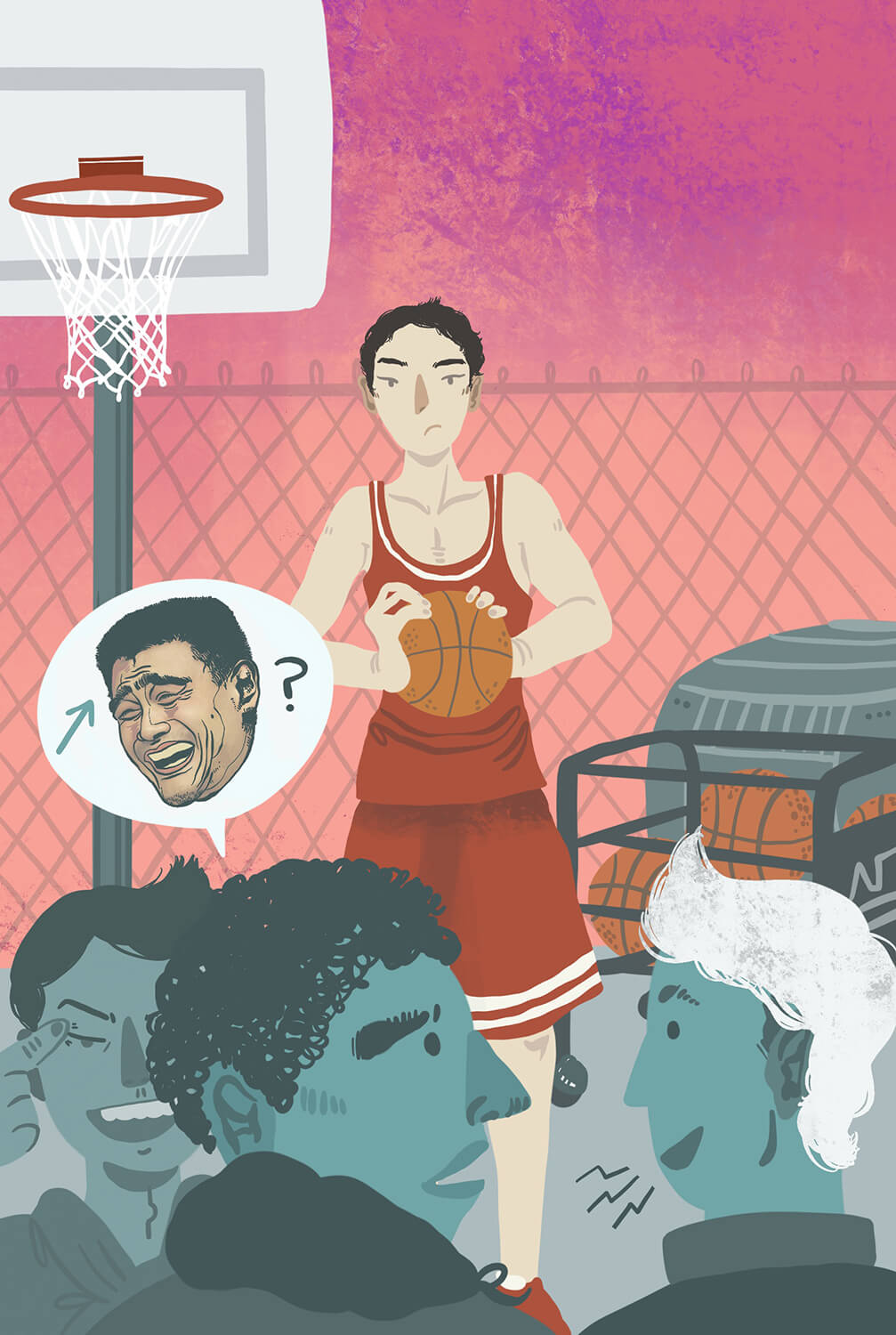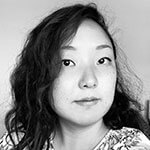
Labels and Categories: What kind of Asian am I?
I was playing basketball in seventh grade when someone yelled out, “Look, it’s Yao Ming!” At first, I didn’t know if this was a compliment or if the person was ignorant. I then realized they were making fun of the color of my skin.
As I continued to grow older, people continued to call me racial slurs, make fun of my eyes, and assume I was nerdy and unathletic. But as a mixed Chicano American, I was also not “fully Asian”. and wasn’t totally accepted into Asian spaces either. For a long time, these challenges kept me from talking openly and honestly about race because I felt excluded in some way by every community that talked about it. Today, I have come to realize that my own experience of racial oppression need not be the end, but that there is also beauty and power in my story.
We all live in a world of labels and categories. In grocery stores, we have categories for what is sold in each aisle. We have categories for our education system (primary, secondary, and higher education). We have labels for our places of worship (denominations and various traditions). Something about the human condition is obsessed with naming how everything is unique, distinct, and
peculiarly particular.
This exists on the personal level, too, as each human being seems to be drawn to the desire to differentiate oneself and bear witness to the world all of its uniqueness and glory. The Jesuit writer Diarmuid O’Murchu once wrote that “‘Differentiation’ refers to the diversity, variation, and heterogeneity that we see all around us, highlighting how things differ from one another even within the same class or species. In a word, everything is uniquely different, irrespective of its strength or weakness. No two atoms are identical. This variety is enhanced by an essential newness — what Brian Swimme and Thomas Berry call ‘an outrageous bias for the novel’ — that characterizes the unfolding of life at every level.”

The problem with differentiation is that we often create hierarchies. In other words, we assign labels and values to certain groups as superior to others. We forget that labels are a tool we created to share our experience and they are not meant for us to use for purposes of domination or to force ourselves (or others) to fit into them. When we confuse this, we cause harm to ourselves and one another.
We see this at play with racial categories such as “Asian American”. On one level, claiming Asian American identity is empowering by owning the specific experience as exquisitely beautiful and worthy of being shared. But we also know the history of the term “Asian American”. It is the history of white supremacy, where the dominant racial group used the term “Asian” as a way to describe and reduce an entire people group to a position of inferiority. Sadly, due to the oppressive history of white normativity in the United States, all persons of color (not just Asians) experience their own skin as a sign of deficit. When people are not given the tools to name their own experience but instead are forced to use the labels others impose, their own sense of power is diminished.
Labels in and of themselves will never completely satisfy us anyways because of the inherent diversity within every label! There are thousands of types of Asian Americans: Hmong Americans, Korean Americans, Chinese Americans, Indian Americans, and more. What does it mean to be Asian American anyway? Who sets the standard? Who lets us know we are “Asian enough”? What about Asian American women? What about Asian Americans with disabilities? What about Asian Americans who are born in the USA and those who have become naturalized citizens? Each experience is different!
Through this, we see that no human experience can be reduced to one word or label. Intercultural theologian Emmanuel Lartey once wrote, “I am like others. I am like some others. I am like no other.” So perhaps a question to ask is: What do I share with all Asians? What do I share with some Asians? What makes me a unique Asian American?
Being a multiracial Asian American
In my own story of being a multiracial or a mixed Asian American, I have come to know both the joy and the exclusion of not being “Asian enough”. Being both Asian American and Chicano American was something difficult for me growing up. It was not until I was 24 years old that I met someone who was also both Chinese and Chicano. I didn’t even believe it when they first told me!
This has brought me confusion, sadness, and self-doubt. I often wondered where I felt “at home”. It seemed like everywhere I went, I was in some way an outsider. For a while, I wanted to avoid race talk altogether — not because it privileged me to do so, but because I did not know how to talk about it in a way that brought healing. Only recently when learning about MultiCrit or critical race theory for mixed folks did I realize that I was not alone in this experience. There are more people who have felt left out and without space to give voice to the beauty of their story.

Without naming this tension, many young people who are immigrants or children of immigrants struggle with their own value and self-worth in the United States because they are not accepted in Asia nor in the U.S. We cling to the term “Asian American” because it feels closer to home rather than not owning our racialized experience at all, but we must go deeper into relating to our own experience of race and that of others.
Perhaps greater emphasis on ethnicity is helpful here. Don’t get me wrong, I am not advocating that we do not talk about race. We need to use racial language in order to deconstruct structural and systemic racial oppression, and we cannot ignore racism as having real and devastating effects on us all. But we need to dig deeper in our own human experience and create room for all of us to identify our many different intersectionalities and the joys and challenges that come with them.
More Than Half
Today, I can truly say I am proud to be Asian American, and more particularly, a Hakka Chinese American of Malaysian descent. I have realized that I do not need to live my life bound to the construct of race and can embrace all aspects that make me who I am. I have realized that there is much diversity in racial categories and it is fruitful to consider them. This does not mean I avoid conversations about race. Instead, it grants me the posture from which I can confront race without fear and actually make a difference. Talking about my multiracial experience is of significant importance to my faith, my leadership, and my actions of justice moving forward.
My parents are not only immigrants from Southeast Asia, but my grandparents from Tejas were part of “la Raza Unida” movement and gave their lives to advocate for civil rights for Chicanos and all people. What both of my families have in common are: struggles with poverty, immigration, and being “otherized”; being from communities of color where white supremacy was internalized to the point of self-defeat; and deep commitments to communal life as opposed to individualism.
It is only by embracing all that I am that I can better love myself and love all that others are. This is why I no longer use the term “half Chinese” or “half Asian” to describe myself. I am more than half Asian American. I am fully Asian American in my own unique way. I am fully Chicano American and I am fully multiracial. We are all am fully many things and cannot be reduced to any one of them.

The invitation for all of us is to reconsider the ways in which categories and labels lead us into oppressive mentalities and behavior. What does it mean to dismantle the power of race (or any category that we cling to) in our hearts and in our communities? Maybe it starts by releasing ourselves from the obligation of having only one definition of any category. Maybe it means we do not have to be “Asian enough” to embrace the use of the term in our own way that promotes justice and dignity for all.
May our efforts lead us to deeper solidarity with the struggles of oppression and exclusion that all persons face (both on the interior and exterior landscapes) while realizing we are much more than the labels we use, even as we use labels to grapple with bearing witness to the wonderful, divine mystery of us all.

Rev. Aizaiah G. Yong, PhD (he/him) is Assistant Professor of Practical Theology and Pastoral Care at Pacific School of Religion in Berkeley, CA. He is also a Pentecostal Christian minister who is committed to cultivating intercultural/interreligious communities that embody compassion, courage, and are pursuing liberation for all.

Pearl from Hephy's Den is a Licensed Creator and Artist from Miami, Florida. She is an ArtCenter College of Design alum and is currently active in both the United States and South Korea. You can find her on Instagram: @hephysden, or her personal website, hephysden.com.